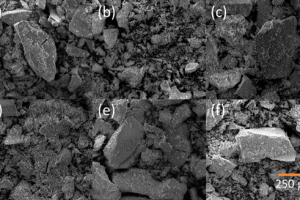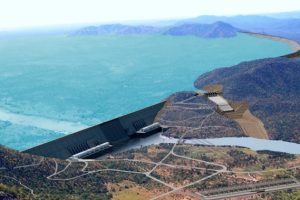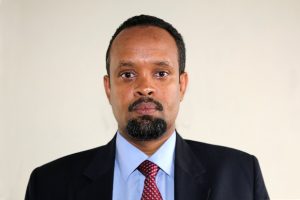
Recently, The Ethiopian Herald held an exclusive interview with Marcel Cabral, Siemens Gamesa Area Director Africa (excl. South Africa) regarding the renewable energy potential and prospects of Horn of Africa in general and Ethiopian in particular. Siemens Gamesa is a leader in the renewable energy industry, working to provide offshore and onshore wind turbines and services. Here follows the interview:
Herald: How do you see the potential for renewable energy development of Africa in general, and East Africa and Ethiopia in particular?
Marcel Cabral : Sun and wind are abundant renewable resources on the continent. Besides, fast growing economies and high population growth are increasing the energy demand in Africa. As a result, more than ever, Africa offers significant opportunities in the field of renewable energies.
Today, with a projected GDP growth of 50 percent until 2024, many African countries have put in place development programs for access to renewable energies with a strong will and ambition to give them a significant share beyond 20 to 50 percent in the energy mix within the next 20 to 30 years. This movement is happening while the private sector is increasingly gaining energy partnerships in Africa, which can only boost economic growth.
In 2019, six of the 10 fastest growing economies were on the continent: Ghana, Ethiopia, Côte d’Ivoire, Djibouti, Sudan and Rwanda. According to a study led by Res4Africa Foundation, the continent is blessed with on average 2,000 kWh/m2 of solar irradiance level for more than 320 days per year, 1,300 GW of wind power onshore and offshore, 15 GW of geothermal energy and 283 GW of hydropower.
In that context, wind energy, has the potential to play an essential role in powering Africa’s growth, including job creation and expanding its industrial sector. In East Africa, the markets with the most substantial potential resources in wind power are Kenya, Tanzania, Ethiopia, Sudan and Djibouti. A probabilistic analysis carried out by the World Bank concluded that it is optimal for Ethiopia to build as much as 4,071 MW of new solar and wind power capacity between 2019 and 2030, providing about 10 percent of supply by the end of this period.
However, in general, Africa needs a more stable evolution and growth in the sector in order to optimize the investment framework. That means that better conditions and infrastructures are required, such as access to electricity networks, a sizeable pipeline of bankable projects and transparent procurement processes. For this, we are calling for more concerted efforts between public and private sector actors to attract private investments and technological transfer at an unprecedented scale.
Twenty years ago, Siemens Gamesa was a pioneer on the continent is today present in countries such as Morocco, Egypt, Tunisia, Algeria, Mauritania, Kenya, Mauritius and South Africa with a total of more than 3,2 GW installed capacity, representing 55 percent of market share and a significant local implantation. We aim is to continue to share our knowledge and experience on how to develop a competitive local value chain with relevant public private stakeholders.
Question: Can you give our readers a background about your company? What are your major undertakings and how many countries you have invested in so far?
Answer: Siemens Gamesa, which headquarter is in Spain, is a global leader in the wind power industry, with a strong presence in all facets of the business: offshore (n°1), onshore (n°2) and services (n°2). With some of the most advanced digital capabilities, we are offering one of the broadest product portfolios in the sector as well as industry-leading service solutions. Our job is to design, manufacture, install and maintain wind turbines, both onshore and offshore, and we do this with fifty sales offices in 39 countries and seven service core competence centres covering all regions. We also offer the possibility to deliver turnkey solutions and/or hybrid and energy storage solutions. Research Development plays a significant role in our company’s strategy as you can imagine, we invested 200 million euro in 2019 in that field, with more than 1200 (Research and Development) R&D engineers.
As of today, we have more than 100 GW installed in 90 countries worldwide. Looking back at our history, the existing company was born in 2017 by merging Siemens’ Wind Power with Gamesa, to become a leader in an increasingly competitive market. Today, we are stronger and more global to invest in new technologies. This helps to deliver more competitive, greener and reliable energy; and this way, we can contribute to enhance energy security, and to mitigate the harmful effects of climate change.
In Africa, considering the involvement of our main shareholder Siemens, we have been present for more than 162 years, with a rich history of innovation and social development.
Question: You have recently started the construction of a 59 MW wind farm in Djibouti. What other plans do you have in terms of similar projects in the Horn of Africa and Ethiopia?
Answer: Since the potential for wind energy in the Horn of Africa is vast, our company is following closely wind farm opportunities in the region.
In Djibouti, we just started the construction works to build a 59 MW wind farm that should be pouring energy into the grid in the first quarter of 2021. Once running, the farm will almost double the current installed power generation capacity in the country, all of which currently comes from fossil fuel sources. The project, which is part of an expanding national renewable energy development program, will indeed enable clean energy supply, while decreasing the cost of electricity and allow the 940,000 population of Djibouti and its key industries to strengthen its electrical independence and economic development.
Further, we are currently about to close a contract for Ethiopia to build a slightly bigger wind farm than the Djiboutian one and we expect to see other opportunities in this promising country in the coming years. The other countries in the Horn of Africa are unfortunately lagging Ethiopia and Djibouti regarding wind energy and we see few opportunities in the short term.
Renewable energies in general and wind energy in particular need an electrical grid infrastructure that is stable enough to receive these energies. Unfortunately, for now, not all the countries in the Horn of Africa can offer these conditions. But we expect to see more opportunities coming in the medium term and we are willing to tackle these opportunities.
Question: In the African context, do you think renewable energy is cost-effective? Why?
Answer: In the past years the world clearly marched towards renewable energy. According to the International Renewable Energy Agency (IRENA), unsubsidized renewable energy is now most frequently the cheapest source of energy generation. And it is expected that the cost of installation and maintenance of renewables continues to sink.
Adding existing efforts made by governments and businesses, these lower costs should lead to foster the significant increase of renewable energies in the future. For Africa the picture is even more delightful! Taking into consideration the massive need for additional electricity, the fact that more and more Africans aspire to green energies and wind and solar resources being equal to better than in any other region of the world, all ingredients are united to move towards an optimized clean energy transition. In that sense, it would not make much sense to base your generation mix in technologies burning oil, coal and gas. In developed countries green energy is substituting existing conventional power plants whereas, in Africa, the dilemma is to add new capacities. Having remarkable potential resources, part of the solution is to use green and affordable energy produced thanks to the wind, sun or hydro reserves.
For technical reasons related for example to the level of the grid stability and the necessity to “pilot” the power plants, in the short term, you cannot expect all the new capacity added to the grid to be green. Nevertheless, a significant part could come from renewables if the right measures and planning are being delivered by the local network operator, like for example EEP in Ethiopia. For a successful implementation, new renewable generation capacity needs decent network development. Countries like Morocco, Egypt and South Africa have demonstrated that this is possible and are now less depending on imports of resources.
All in all, renewable energy, and specifically wind energy, is clearly a part of the solution for the future African electrical energy mix. And I dare to say probably the most prominent role.
Question: Over the past years, Ethiopia has been extensively investing in green economy and renewable energy development. Do you have any comment on Ethiopia’s performance?
This situation and the information we have is as follows:
Ethiopia is endowed with outstanding and diversified renewable energy resources, namely hydro, wind, solar, geothermal, and biomass, which offers the country the opportunity of becoming the power hub for the East Africa region.
The estimated potential for wind is 10 GW, while only 324 MW are currently installed. According to Wood Mackenzie 2019 forecast study, around 25 GW of wind power would be installed in Ethiopia by 2028.
Djbouti’s current national plan targets 25 GW of wind to be installed by 2030.
According to Analysis by CESI and RES4AFRICA Foundation, additional capacity from variable renewable energy generation can be integrated, on top of the projects already in the Country’s pipeline, thanks to the exploitation of the future interconnection capacity and the operational flexibility ensured by the hydroelectric power plants. In 2025, the country can integrate an installed capacity up to 2,400 MW from wind and to 3,600 MW from wind by 2030.
Such transition is being supported by the Ethiopia Growth and Competitions Programmatic Development Policy Operation, underpinned by reform in the infrastructure sectors, including power.
The transition toward private financing for power sector infrastructure is one of the conditions to reach the objectives.
In order to enable Ethiopia achieve its targets, Government has engaged with Renewable Energy Champions such as the Danish Government, back in 2016 with the launch of the Wind Acceleration Program, more recently with the World Bank-IFC in 2019, as well as with Siemens AG signing a Memorandum of Understanding with the Investment Commission of Ethiopia, to address the country’s energy and infrastructure sector challenges.
So, we do indeed consider that Ethiopian Government is taking the proper measures to create the frameworks that will enable unlock the full renewable potential the country has and we encourage the Ethiopian Authorities to follow this path
Question: Ethiopia sees hydropower as its comparative advantage and besides meeting its national demand; it has a vision to export power to neighboring countries. Do you think your activities are compatible with this? How?
Answer: Ethiopia’s hydropower potential is estimated at up to 45GW, representing the second highest in Africa. Hydropower based development provides a gateway to economic transformation through industrialization, urbanization as well as through the provision of access to modern energy to rural areas.
The current electricity installed capacity of 4.2 GW is 97 per cent renewable of which the biggest share is hydropower. Furthermore, 8,8GWof hydropower development is under construction.
Hydropower is a wise choice, being cheap, easy to pilot and representing a natural energy storage solution nevertheless we believe, a country should put efforts in diversifying its energy mix and not rely on one technology only. There are always risks existing related to one specific technology, which for hydropower could be droughts, and the effects of climate change to be added on top. As an example, insufficient rainfall in 2017 has led to severe water shortages, catastrophic livestock losses, and failed crops throughout the country. In fact, the drought in southern Ethiopia comes as the country’s north and central highland communities continue to recover from a severe drought in 2016 triggered by multiple consecutive seasons of below-average rainfall and the effects of the 2015/2016 El Niño climatic event.
Wind power needs the electrical grid to have some storage capabilities so hydro and renewable intermittent sources do therefore match perfectly, as hydro can be used as storage (pump or reserve). With this process, the excess power generated by wind can be stored in the form of gravitational potential energy of water, pumped from a lower point reservoir to a higher elevation point. The water stored can be released and, thus, produce electric power with turbines, during periods of high electrical demand. This would allow Ethiopia to generate reliable and cheap energy not only for itself but also for the neighboring countries.
Without any doubt, those generation solutions in addition to the development of interconnections between Ethiopia and the neighboring countries will accelerate economic development; if competitive sustainable development is permitted through renewable energies Ethiopia is blessed with. Definitively, Ethiopia can be the electrical hub and the “battery” of the Horn of Africa.
The Ethiopian Herald April 16/2020
BY ABIY HAILU





